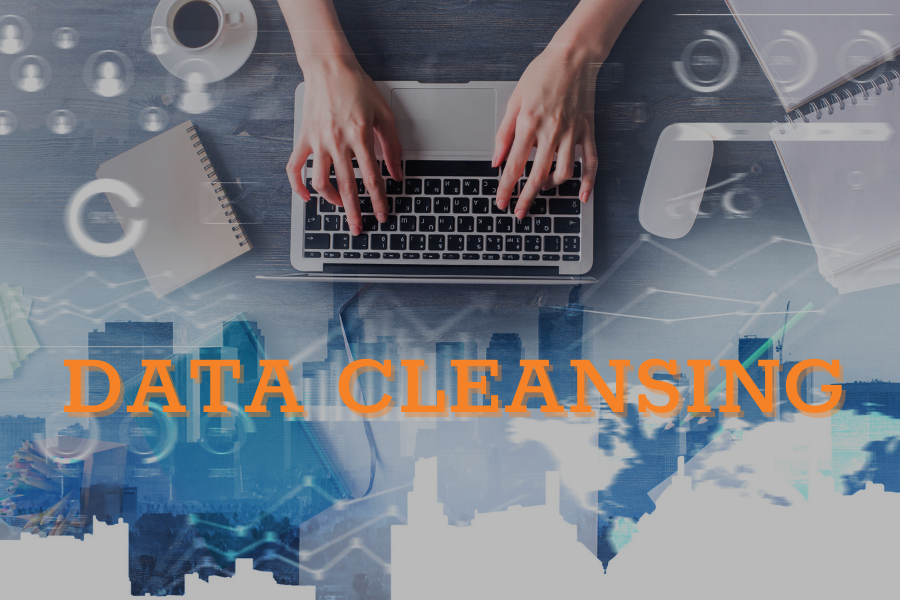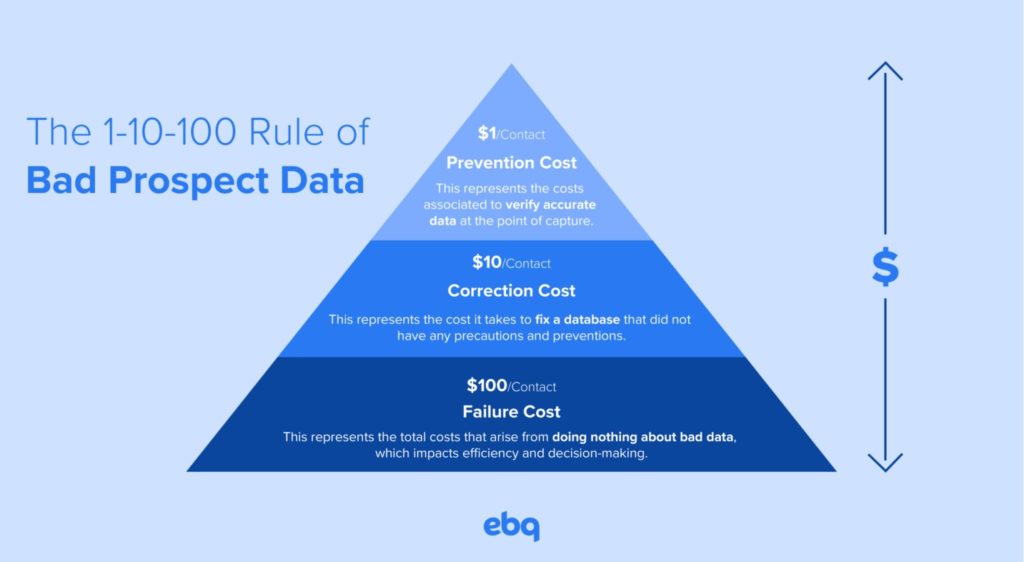Data Cleansing: Why it Important? 6 Steps to Data Cleansing


Because data is the lifeblood of machine learning and artificial intelligence, enterprises must ensure that their data is of high quality. While data markets and other providers can assist in obtaining clean and organized data, these platforms do not guarantee the quality of an enterprise’s own data. As a result, companies must understand the processes involved in a data cleansing strategy and how to use data cleansing technologies to eliminate problems in their datasets.
Data cleansing (also known as data cleaning or data scrubbing) refers to the techniques developed to help organizations improve their data quality. Any firm that implements these processes will gain various benefits, with improved decision-making being one of the most significant.
This article addresses some of the most frequently asked questions about data cleansing:
What is Data Cleansing?
Data Cleansing is the process of ensuring that data is accurate, consistent, and usable. It involves identifying and rectifying data and records that are missing, erroneous, irrelevant, or otherwise problematic (“dirty”). Data can be cleaned by detecting and fixing errors or corruptions, eliminating them, or manually processing the data to prevent recurring mistakes.
Although software solutions can assist with most aspects of data cleansing, some tasks must be performed manually. Despite being a daunting task, data cleansing is essential for managing a company’s data effectively.
Why Do We Need It?
The importance of data cleansing lies in maintaining data integrity. Data integrity is crucial because it ensures that the data we use for decision-making is of high quality.
Since our decisions often depend on data sets, poor data quality leads to poor decisions. Therefore, maintaining data integrity is essential as it provides high-quality data, resulting in better decisions.
Data is undeniably one of the most valuable assets a company can have to support and drive growth. According to an IBM study, poor data quality costs the United States $3.1 trillion each year. Addressing poor data should be a priority, as illustrated by the 1-10-100 quality principle, which shows that the cost of poor data increases exponentially over time.

The following are some examples of issues that can arise from erroneous data:
Business Functions
- Marketing: An ad campaign targets users with irrelevant offerings based on low-quality data. This not only reduces customer satisfaction but also results in missed sales opportunities.
- Sales: A salesperson fails to contact past customers due to incomplete or inaccurate data.
- Compliance: An online company receives government penalties for failing to comply with data privacy regulations. Therefore, the data cleansing vendor should provide sufficient assurances that your data will be processed in accordance with GDPR guidelines.
- Operations: Configuring robots and other production machinery based on low-quality operational data can lead to severe issues for manufacturing businesses.
Industries
- Healthcare: Dirty data can lead to incorrect treatments and ineffective pharmaceutical medications. According to an Accenture poll, 18% of health executives say that a lack of clean data is the biggest roadblock to AI reaching its full potential in healthcare.
- Accounting & Finance: Inaccurate or insufficient data can result in regulatory violations, manual inspections that delay decisions, and sub-optimal trade strategies.
- Manufacturing and Logistics: Accurate data is essential for inventory assessments. Missing or incorrect data can lead to delivery issues and customer dissatisfaction.
Organizations can avoid these situations and their consequences by using clean data.
What Are the Benefits of Data Cleaning?
Higher-quality data impacts all activities that use data, which is nearly every modern business activity. When data cleaning is prioritized as a critical organizational task, it can lead to numerous benefits for everyone involved. Here are some of the most significant advantages:
It Significantly Enhances Decision-Making.
This is an obvious benefit and one we’ve already discussed in this article. Clean, high-quality data can improve analytics and business intelligence, leading to better decision-making and goal execution. This is one of the most important advantages of implementing a robust data cleansing process.
2. It Facilitates Customer Acquisition.
Ensuring high-quality data can greatly improve a business’s client acquisition efforts. With effective data cleansing techniques, a business can attract new customers more efficiently and even retarget previous clients. This principle is fundamental to Customer Relationship Management (CRM) software and analytics systems.
3. It Conserves Valuable Resources.
Eliminating duplicate and erroneous data from databases can save a company money in terms of storage space and processing time. Duplicate and inaccurate data can quickly drain an organization’s resources, especially if it is heavily data-driven. Without the right tools and processes, cleaning and scrubbing data after it has been acquired can be time-consuming and costly.
4. It Increases Productivity.
Clean data enables employees to make the most of their working hours. When low-quality data is used, employees may spend significant time cleaning and re-analyzing data due to errors. Poor-quality data can lead to inaccurate conclusions, resulting in major inefficiencies at best and catastrophic errors at worst.
Moreover, the ability to make competent and timely decisions can boost employee morale, allowing them to be more efficient and confident in their decisions, ultimately increasing overall productivity.
5. It Has the Potential to Increase Revenue.
Effective processes are crucial in the business world, and spending excessive time on data cleansing can be costly.
Businesses that improve data quality through a data cleaning strategy can see a significant increase in customer response rates. This leads to higher productivity, happier customers, and better decisions. In Part Two of this tutorial, we’ll discuss how to implement your data strategy to maximize your return on investment.
When these benefits are combined, the result is often a more profitable company, due not only to improved external sales efforts but also to enhanced internal operations.
Read more: Why Should You Choose Outsourcing Data Cleansing?
What Are the Various Forms of Data Problems?
When businesses aggregate datasets from multiple sources, scrape data from the web, or acquire data from clients or other departments, they encounter a variety of data challenges. The following are some examples of common data issues:
- Duplicate Data: Occurs when two or more records are identical. This can lead to inaccurate inventory counts, duplication of marketing materials, or unnecessary billing actions.
- Conflicting Data: When the same records have different attributes, indicating data inconsistency. For example, a company with multiple versions of addresses may experience delivery complications.
- Incomplete Data: Information that is missing certain attributes. For instance, employee payrolls may not be processed if their social security numbers are absent from the database.
- Invalid Data: Data that does not adhere to the standardization process. For example, a 9-digit phone number record instead of the required 10 digits.
What Are the Underlying Causes of Data Problems?
Data problems arise due to technical challenges such as:
- Data Synchronization Issues: Problems occur when data isn’t properly shared between systems. For example, if a banking sales system captures a new mortgage but fails to update the bank’s marketing system, the customer may be confused by receiving irrelevant marketing messages.
- Software Flaws in Data Processing Applications: Applications may introduce errors or overwrite accurate data due to various bugs.
- User Obfuscation of Information: Deliberate obfuscation of data by users. For instance, people may provide partial or inaccurate information to protect their privacy.
What Is High-Quality Data?
Several factors determine the quality of data:
- Validity: Refers to how well the data adheres to business rules or constraints. Common constraints include:
-
- Mandatory Restrictions: Certain columns cannot be left blank.
- Data Type Constraints: A column’s values must match the defined data type.
- Range Constraints: Numbers or dates must fall within specified minimum and maximum values.
- Foreign Key Constraints: A column’s values are defined by a column in another table containing unique values.
- Special Constraints: At least one field in a dataset must be unique.
- Regular Expression Patterns: Text fields must be validated according to specific patterns.
- Cross-Field Validation: Certain requirements must be met across multiple fields.
- Set-Membership Constraints: A subtype of foreign key constraints where a column’s values are derived from a predefined set of discrete values or codes.
- Accuracy: The degree to which data conforms to a standard or a true value.
- Completeness: The extent to which data and related measures are recognized as thorough or comprehensive.
- Consistency: Equivalence of measurements across systems and subjects.
- Uniformity: Ensuring all systems use the same units of measurement.
- Traceability: The ability to trace and access the data’s source.
- Timeliness: How recently the data was updated and the speed at which it was refreshed.
When combined, these traits help an organization maintain high-quality data that can be used for various purposes without the need for educated guesses.
Step-by-Step Guide to Data Cleansing
Here are the typical steps involved in the data cleansing process:
1. Data Profiling
- Understand the Data: Begin by analyzing your data to understand its structure, content, and quality.
- Identify Data Issues: Use profiling tools to detect anomalies such as missing values, duplicates, inconsistent formats, or outliers.
2. Data Standardization
- Establish Standards: Define a consistent format for your data (e.g., date formats, units of measurement).
- Apply Standards: Convert data to the established formats, ensuring uniformity across datasets.
3. Data Validation
- Set Validation Rules: Establish rules that your data should follow (e.g., a phone number must have 10 digits).
- Run Validation Checks: Apply these rules to identify invalid or incorrect entries.
4. Data Deduplication
- Identify Duplicates: Search for and identify duplicate records within the dataset.
- Merge or Remove Duplicates: Consolidate duplicate records or remove redundant entries to avoid inaccuracies.
5. Data Correction
- Correct Errors: Address and correct issues like typos, incorrect values, or inconsistencies.
- Fill in Missing Data: Where possible, fill in missing information using methods like estimation, interpolation, or data imputation.
6. Data Enrichment
- Add Missing Information: Enhance the dataset by adding external data sources, ensuring that the dataset is comprehensive and up-to-date.
- Enhance Data Quality: Incorporate additional information that can improve the richness and usefulness of the data.
7. Data Verification
- Review Changes: Verify that the changes made during the cleansing process have been correctly implemented.
- Cross-Check with Source Data: Ensure that the cleaned data aligns with source data and meets the expected standards.
8. Data Documentation
- Document Processes: Keep a record of the data cleansing steps, rules applied, and any modifications made to the dataset.
- Create a Data Dictionary: Maintain a data dictionary that outlines the structure, contents, and any transformations applied to the data.
9. Ongoing Monitoring
- Regular Audits: Perform routine checks to ensure data quality remains high over time.
- Automate Processes: Where possible, automate the data cleansing process to maintain consistency and efficiency.
Following these steps can help ensure that your data is clean, accurate, and ready for effective analysis.
Consider Outsourcing Data Cleansing to a Professional Services Provider
Data cleansing is a critical process that ensures the accuracy, consistency, and reliability of your organization’s data. High-quality data is essential for making informed business decisions, optimizing operations, and enhancing customer experiences. However, data cleansing can be time-consuming, resource-intensive, and requires specialized expertise to handle effectively.
For many organizations, managing data cleansing in-house can be challenging, especially if they lack the necessary tools, technology, or skilled personnel. In such cases, outsourcing data cleansing to a professional services provider can be a strategic move with numerous benefits.
Why Outsource Data Cleansing?
- Access to Expertise: Professional data cleansing service providers have dedicated teams of experts who are well-versed in the latest data management techniques. They possess the technical know-how to handle complex data issues, ensuring your data is thoroughly cleansed and error-free.
- Advanced Technology: These providers utilize state-of-the-art tools and technologies to automate and streamline the data cleansing process. This not only speeds up the process but also enhances accuracy, reducing the likelihood of human error.
- Cost Efficiency: Outsourcing can be more cost-effective than maintaining an in-house team. You can avoid the overhead costs associated with hiring, training, and equipping your staff with the necessary tools. Instead, you pay for the services you need, when you need them.
- Focus on Core Competencies: By outsourcing data cleansing, your internal teams can focus on what they do best—driving business growth, innovation, and customer engagement. This allows you to maximize productivity and allocate resources more efficiently.
- Scalability and Flexibility: Professional service providers offer flexible solutions that can scale according to your business needs. Whether you have a small project or require ongoing support, they can adjust their services to meet your demands.
- Improved Data Quality: With expert handling, your data will be more accurate, consistent, and ready for analysis. This leads to better decision-making, enhanced operational efficiency, and a stronger competitive edge.
- Compliance and Security: Reputable data cleansing providers adhere to strict data security and privacy regulations, ensuring your data is handled in compliance with industry standards such as GDPR, CCPA, and HIPAA. This mitigates the risk of data breaches and ensures your sensitive information is protected.
Take the Next Step Towards Clean Data
Outsourcing your data cleansing needs to a professional services provider can be a game-changer for your organization. It enables you to leverage specialized expertise, advanced technology, and cost-effective solutions to maintain high-quality data.
Don’t let poor data quality hinder your business success. Take the next step towards clean, reliable data today. Partner with a trusted data cleansing service provider and unlock the full potential of your data.
Contact us now to learn more about our data cleansing services and how we can help your business thrive.


